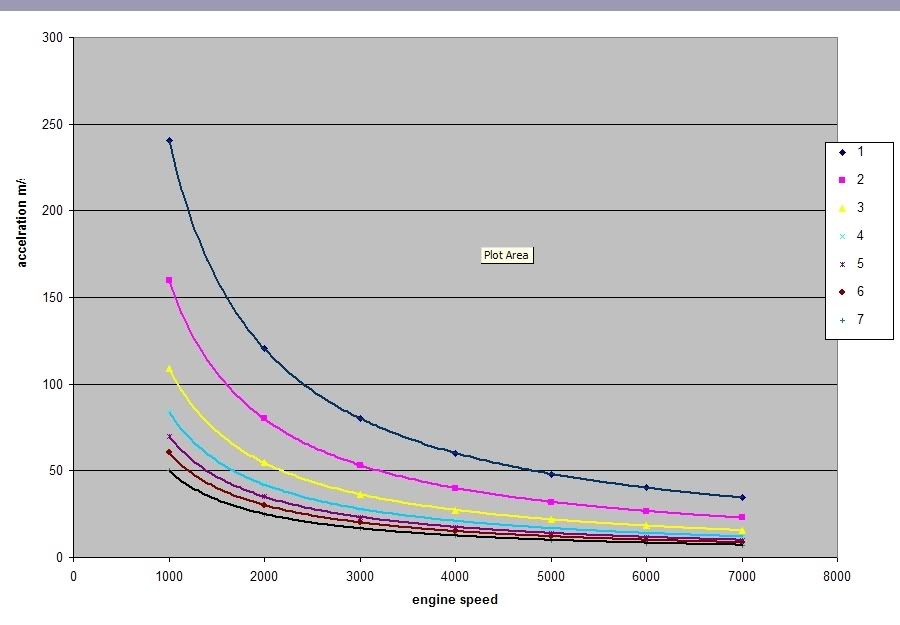Auto, It sounds like you don't understand the relationship between power and torque; I'll explain if you want:-
If you have 650bhp at 12,000 rpm the engine is putting out about 284 lbft. If you then put that through a 16:1 gear ratio the power is still 650bhp (minus a bit due to inefficiences, but we'll ignore that for now) and an output torque of 4544lb ft at 750rpm. If the tyre diameter is 2 feet that's a force at the contact patch of approx 20500 Neutons, and a road speed of 23.9 m/s
If we now take a constant power engine, giving 650BHP, and attach it directly to the same wheels, but instead of turning the engine at 12,000rpm we slow it down to 750rpm it will still put out 650bhp (it is constant power remember!), and in order to do so it must produce a torque of 4544lbft. On a diameter of 2 feet that's approx 20500 Neutons of force (at the same 23.9m/s road speed) -exactly the same as the situation when you used a gearbox to step the same power down from 12,000rpm. (infact, as there is no geabrox in this example you might actually have more force available as there is no gear adding inefficiencies!).
EDIT:- Since the wheel speed and force at the contact patch is the same in both examples one will not be likely to wheel spin any more than the other -despite the wildly different engine speed and the fact that there is no gear ratio in the second example.
(FYI -I still think it will be better to produce an engine which isn't constant power, and have 6 or 7 gear ratios as I believe the package will be lighter and will allow the engine to sit further forward -improving weight distribution).
- Login or Register
No account yet? Sign up



